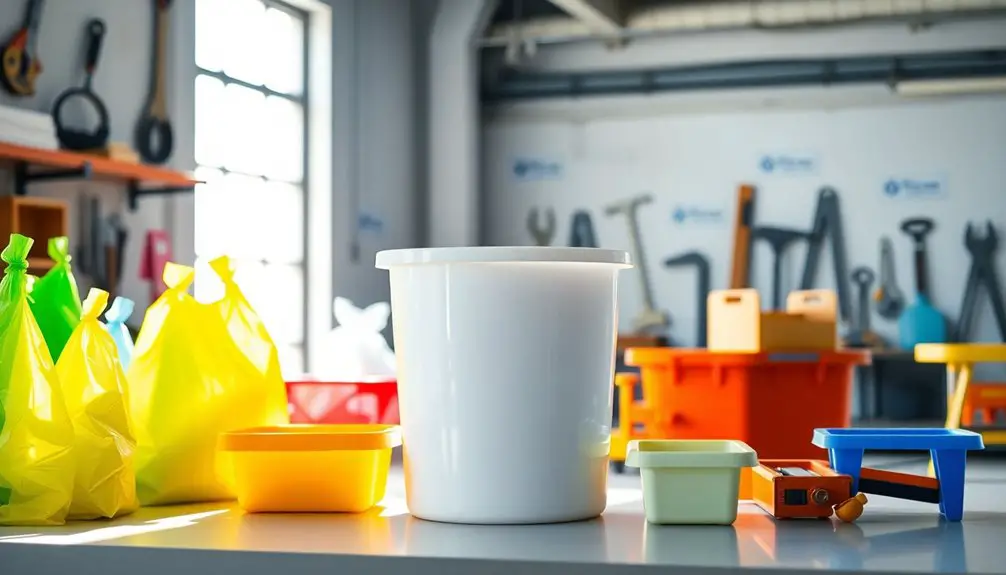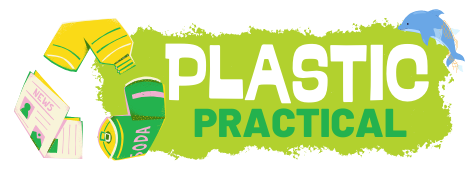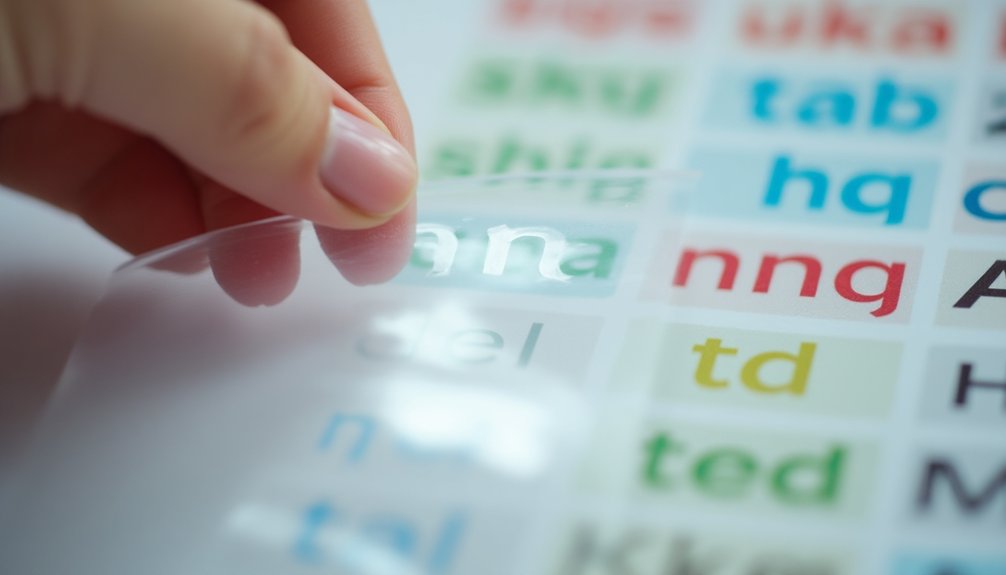You can easily pronounce "polypropylene" by breaking it down into syllables: pol-y-pro-py-lene. Stress the third syllable, "pro," to get it right. An audio resource can help guide you, so listen closely and repeat after it. Practice consistently and record your attempts to pinpoint improvements. Try using "polypropylene" in sentences to reinforce your memory. This versatile thermoplastic is everywhere, from packaging to automotive parts, showcasing its significance in everyday life. If you're curious about its various applications and environmental impact, there's plenty more to explore about polypropylene!
Key Takeaways
- Utilize online audio resources for both American and British pronunciations of "polypropylene" to hear correct enunciation.
- Practice regularly to reinforce the pronunciation and improve your retention of the correct sounds.
- Record your own pronunciation and compare it to audio resources to identify areas for improvement.
- Use the word "polypropylene" in sentences to enhance familiarity and comfort with its pronunciation.
- Refer to the IPA representation (/ˌpɒl.ɪˈprəʊ.pə.liːn/) for guidance on syllable emphasis and stress placement.
Understanding Polypropylene
Polypropylene is a plastic that you likely encounter every day in items like food containers and car parts. It's a thermoplastic polymer produced from propylene monomers, making it one of the most widely used plastics in the world. You mightn't realize it, but this new word, polypropylene, represents a versatile material that's essential in various applications.
Thanks to its durability and chemical resistance, polypropylene is found in everything from packaging to automotive parts, textiles, and medical devices. You'll appreciate its high tensile strength and flexibility, along with its lightweight nature. Plus, it's resistant to moisture, chemicals, and UV light, making it suitable for multiple environments.
Although polypropylene is recyclable and carries a recycling code of 5, its recycling rate remains low, with around 1% recycling rate in some regions, which has sparked research into more efficient recycling technologies.
You should also be aware of the environmental concerns surrounding polypropylene, such as the potential for microplastics resulting from degradation. The need for biodegradable alternatives is growing to help reduce plastic waste.
Understanding polypropylene and its impact can help you make informed choices about the products you use every day.
Pronunciation Guide
- Listen and Repeat: Find audio pronunciations online to hear how it's said correctly.
- Practice Regularly: Repetition will help engrain the correct pronunciation in your mind.
- Record Yourself: Hearing your own pronunciation can highlight areas for improvement.
- Use It in Context: Try saying "polypropylene" in sentences related to your field to reinforce learning.
Correct pronunciation is crucial, especially in technical discussions, so familiarize yourself with these tips.
Mispronunciations can lead to misunderstandings, so practice and clarity are key!
Common Applications

The versatility of polypropylene makes it a staple in various industries, showcasing its remarkable adaptability. You'll find this polymer in a wide range of applications, all thanks to its lightweight, strong, and durable properties.
Here's a quick overview of some common uses:
| Industry | Application | Benefits |
|---|---|---|
| Packaging | Containers, films | Lightweight, strong |
| Automotive | Bumper covers, interior trim | Weight reduction, cost-effective |
| Textile | Carpets, upholstery, clothing | Durable, moisture-resistant |
| Medical | Sterile packaging for syringes | Ensures safety and sterility |
| Consumer Goods | Toys, household items | Versatile and safe for everyday use |
In packaging, polypropylene's strength and lightness make it ideal for containers and films. The automotive sector values it for parts that help reduce vehicle weight. In textiles, it provides durability and moisture resistance for carpets and clothing. Medical applications benefit from polypropylene's ability to create sterile packaging, ensuring safety. Lastly, you can spot polypropylene in toys and household items, highlighting its widespread presence in your daily life. Additionally, polypropylene's use in greenhouses, such as thermally insulating materials for film covers, is also gaining traction due to its excellent heat retention properties.
Environmental Considerations
When considering the environmental impact of polypropylene, it's essential to recognize both its recyclability and the challenges it faces. While polypropylene is recyclable and marked with the recycling code 5, its recycling rate is lower than that of other plastics, which poses significant environmental challenges. The healthcare sector's reliance on plastics for single-use items contributes to approximately 25% of hospital waste, contributing to the environmental impact.
Here are some key considerations:
- Microplastic Pollution: As polypropylene degrades, it can contribute to microplastic pollution, which negatively affects ecosystems and wildlife.
- Improving Recycling Technologies: There's ongoing research aimed at enhancing recycling methods for polypropylene, with hopes of increasing its recycling efficiency and reducing waste.
- Biodegradable Alternatives: Scientists are exploring biodegradable alternatives to polypropylene to lessen its environmental impact and promote sustainable plastic use.
- Energy Efficiency: The production of polypropylene is generally more energy-efficient compared to many other plastics, making it appealing in circular economy initiatives.
And 5. The use of high-quality plastics in medical environments ensures safety and sterility, reducing infection risks and improving patient outcomes, highlighting the importance of responsible consumption and recycling practices in the healthcare sector.
Additional Learning Resources

To enhance your understanding of how to pronounce "polypropylene," a variety of additional learning resources are available. Here are some effective tools you can use to improve your pronunciation skills:
| Resource Type | Description |
|---|---|
| Audio Pronunciations | Explore online platforms for both American and British pronunciations. |
| IPA Representation | Familiarize yourself with the IPA: /ˌpɒl.ɪˈprəʊ.pə.liːn/ to grasp syllable emphasis. |
| Interactive Quizzes | Test your knowledge of polypropylene through engaging quizzes. |
| Crowdsourced Dictionaries | Access audio pronunciation dictionaries with variations across languages. |
| User-Generated Content Forums | Share your own audio pronunciations and learn from others in community forums. |
Frequently Asked Questions
How Do We Pronounce Polypropylene?
To pronounce "polypropylene," you emphasize the third syllable. You can say it as /ˌpɒl.ɪˈprəʊ.pə.liːn/ in British English or /ˌpɑː.lɪˈproʊ.pə.liːn/ in American English. Practicing with audio can help you improve.
How to Pronounce Pp?
To pronounce "pp," just say the letters separately: "pee" and "pee." It's straightforward, but practice helps. You'll get the hang of it quickly, especially if you repeat it a few times aloud.
How Do You Pronounce Polypropylene Random Copolymer?
To pronounce "polypropylene random copolymer," emphasize "random" and "copolymer." In American English, say /ˌpɑː.lɪˈproʊ.pə.liːn ˈrændəm ˈkoʊpəˌləmər/, while British English uses /ˌpɒl.ɪˈprəʊ.pə.liːn ˈrændəm ˈkəʊ.pə.lə.mə/.
What Is the Correct Word Pronunciation or Pronunciation?
You've got a couple of options for saying "pronunciation." You can use /prəˌnʌn.siˈeɪ.ʃən/ or /prəˈnʌn.si.eɪ.ʃən/. Just remember, the emphasis typically falls on the third syllable in both cases.

